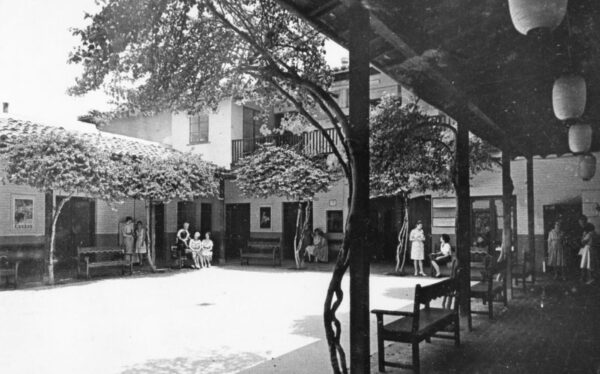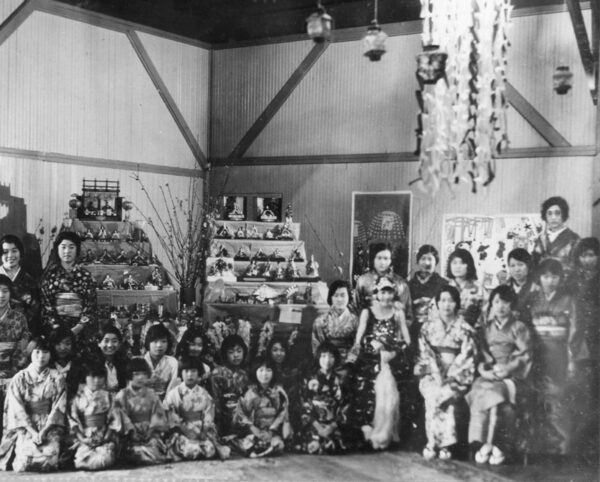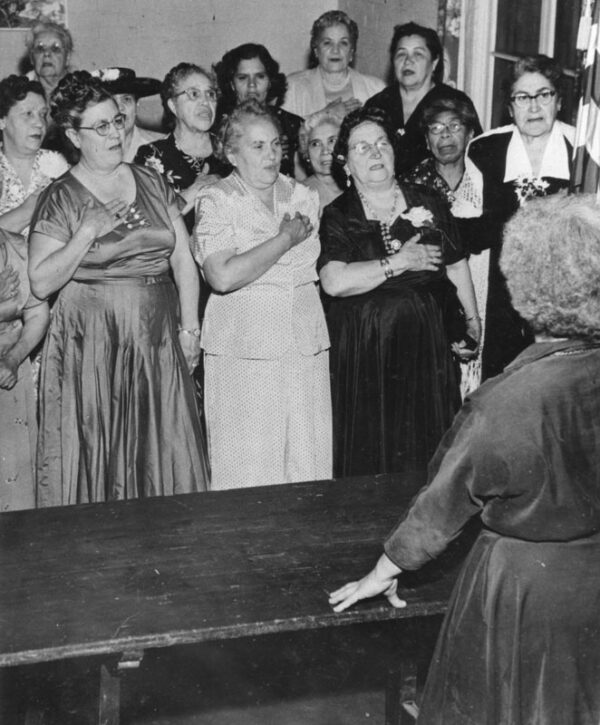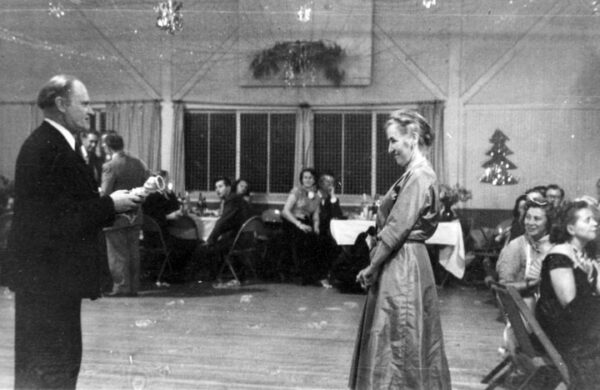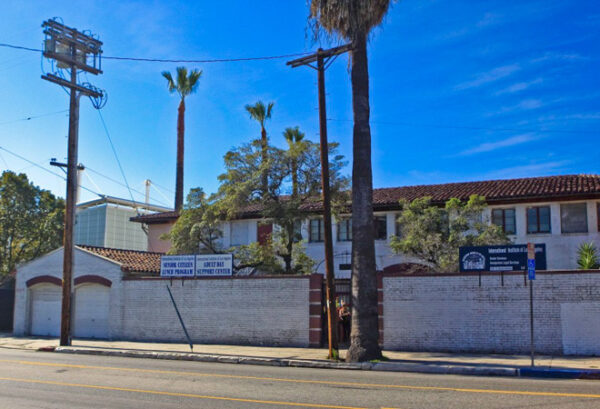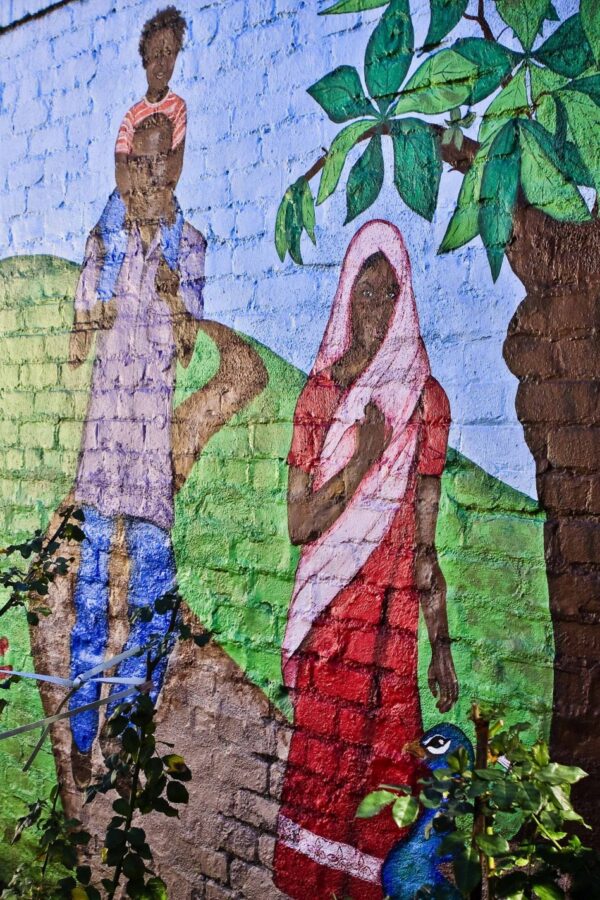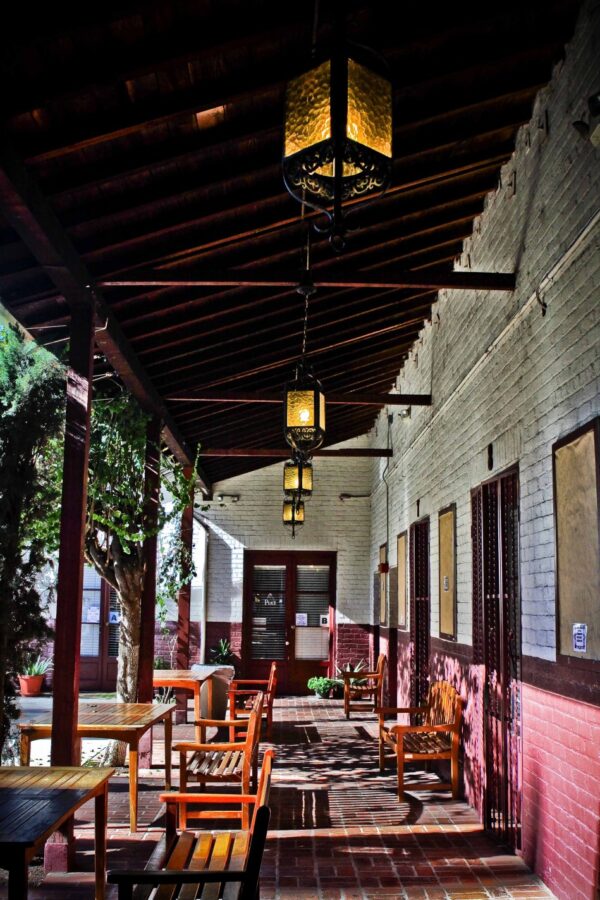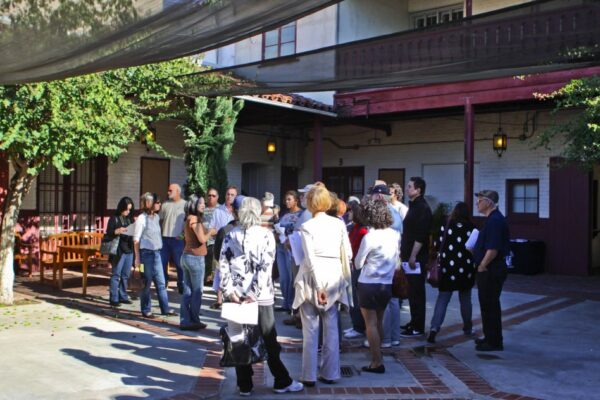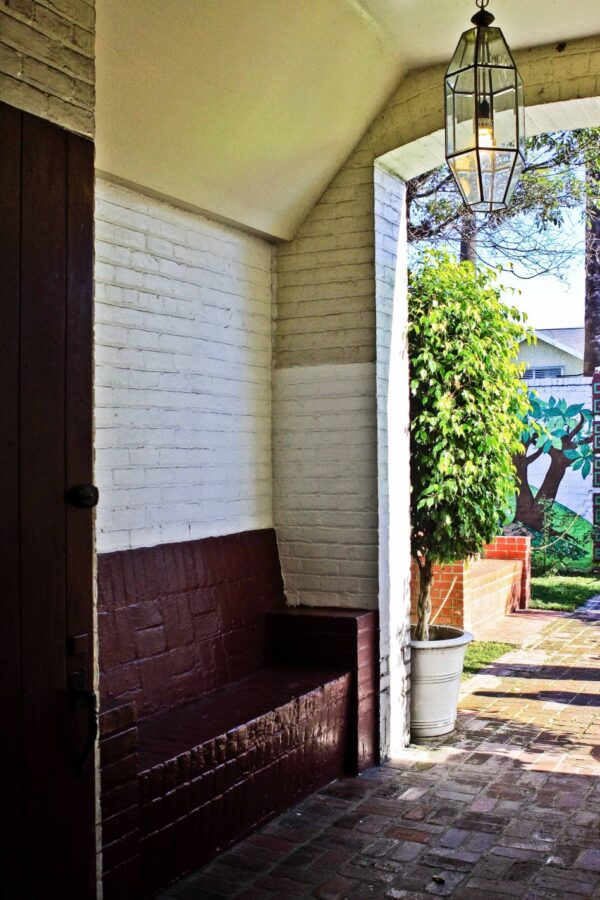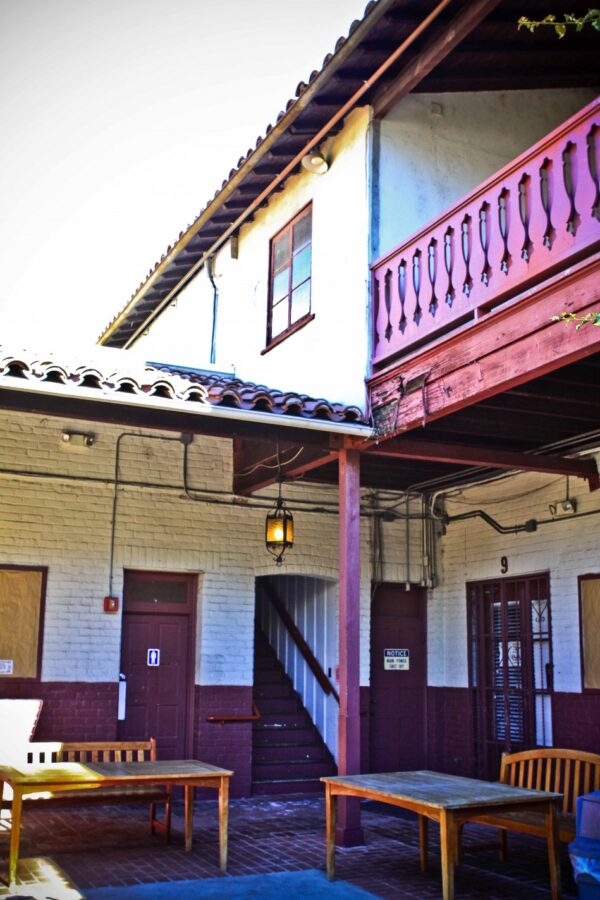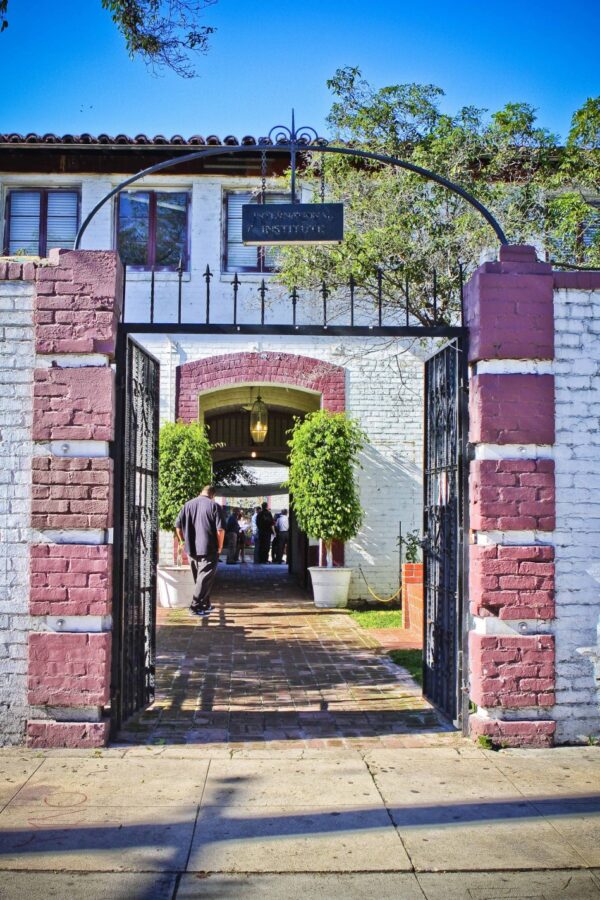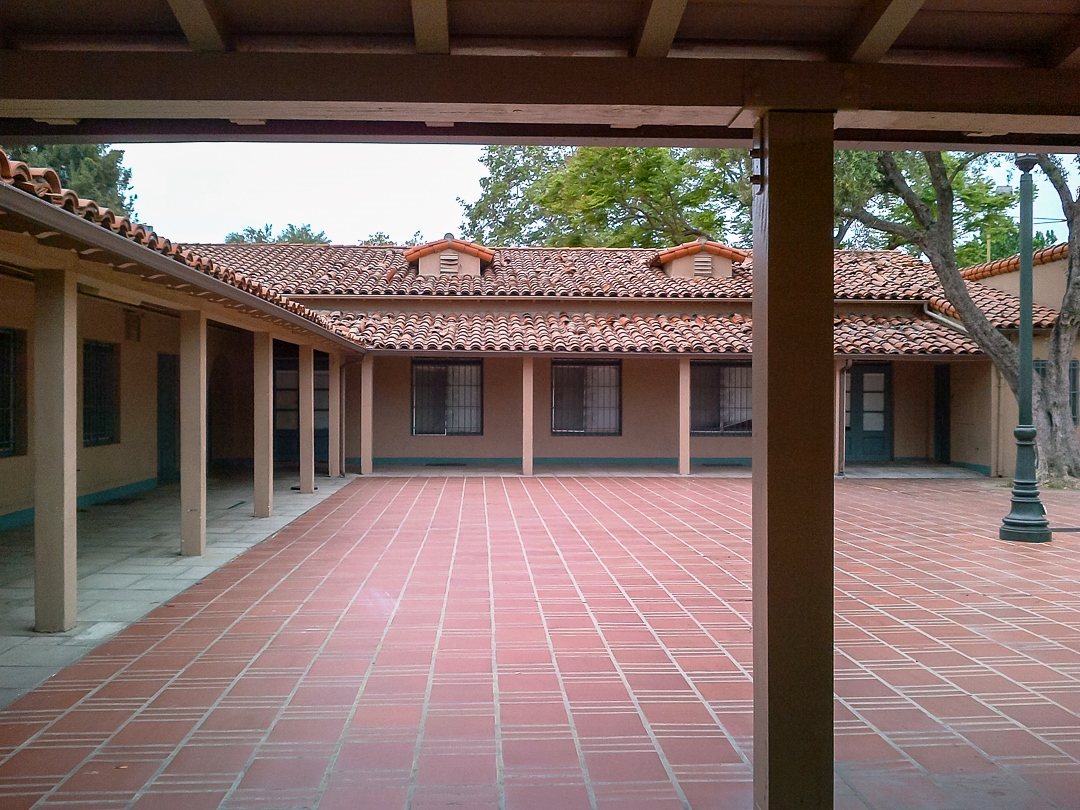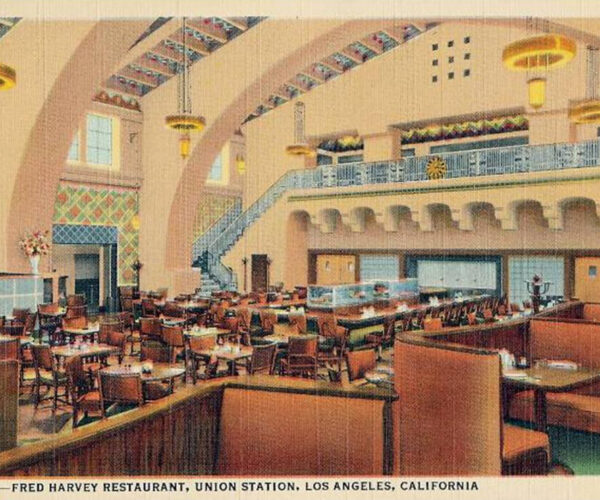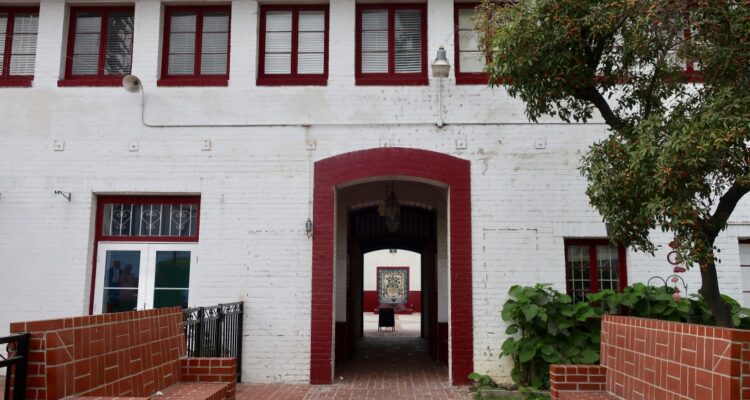
Place
International Institute of Los Angeles
The International Institute of Los Angeles was founded under the YWCA as part of the nationwide International Institute Movement to help immigrant women adapt to life in the United States.
Saved
With a strong presence and commitment to help immigrant women and girls in Boyle Heights since 1915, this property became Historic-Cultural Monument #1224 in 2021.
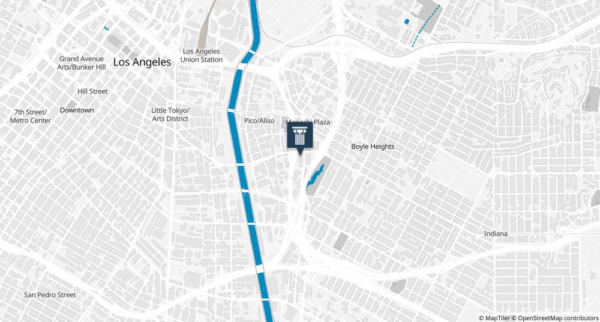
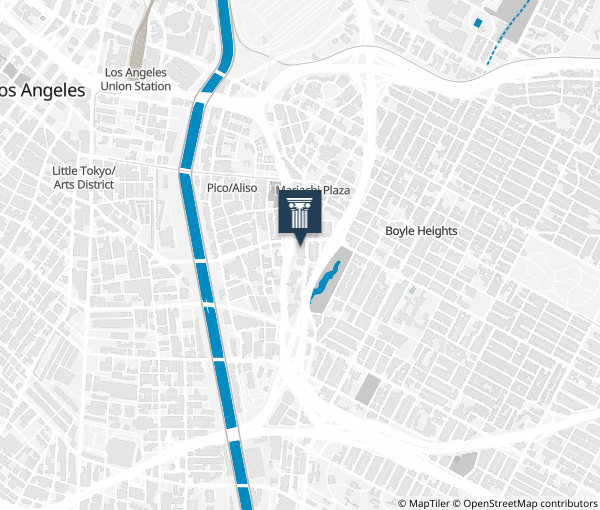
Place Details
Address
Architect
Year
Style
Property Type
Government Officials
Community
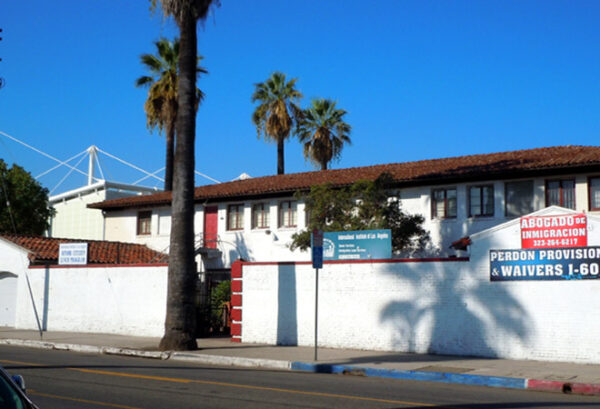
Forecourt of International Institute of Los Angeles, view west in 2011. Photo by Laura Dominguez/L.A. Conservancy. |
Overview
The International Institute of Los Angeles was founded under the umbrella of the Young Women’s Christian Association (YWCA) as part of a national International Institute movement which aimed to provide immigrant women and girls access to social services, English language classes, and opportunities for jobs, civic growth, and cultural expression.
When the property was listed as a redevelopment opportunity by the International Institute in April 2019, its future appeared uncertain. This spurred the Boyle Heights Community Partners to submit a Historic-Cultural Monument (HCM) nomination. The Conservancy helped prepare and supported the HCM nomination.
About This Place
About This Place
With a period of significance from 1931 to 1952, the property located at 435 South Boyle Avenue is significant for its associations with Progressive Era reform, women’s social movements, patterns of immigration in Los Angeles, and the development of the Boyle Heights neighborhood. Though the identified period of significance of the property is 1931 to 1952, the building remained in continuous use as a nonprofit community space until at least 2020.
The property is also an excellent example of Spanish Colonial Revival architecture in an institutional setting designed by notable architects, Walter Webber and Sumner Spaulding.
The International Institute of Los Angeles was founded in 1914 under the YWCA as part of the nationwide International Institute Movement. The International Institutes offered first- and second-generation women an alternative to the assimilationist practices of the settlement house movement of the late 19th and early 20th centuries. The agencies structured their social services around the theory of cultural pluralism, arguing that preserving immigrant heritage and identity strengthened American democracy. More than 50 branches opened across the country before World War II, including two in California.
The Institute moved several times in its early years and relocated to an 1876 residence in Boyle Heights in 1915. Its arrival in Boyle Heights coincided with the neighborhood’s development as the so-called “Ellis Island of the West,” as immigrant and working-class residents found themselves confined to the city’s eastside due to restrictive zoning laws and real estate practices.
In 1924, the YWCA purchased the one-acre site on Boyle Avenue and relocated a small house to the property in order to expand its services.
The YWCA announced in 1930 that its multilingual staff and over 100 volunteers had served more than 29,000 people representing 28 nationalities through casework, classes, social clubs, and events. One of its most successful programs was its annual International Day Festival, which offered members a chance to showcase traditional handicrafts, performing arts, attires, and cuisines.
In 1931, the YWCA’s leadership announced plans to construct a new administration building with support from several benefactors. The organization entrusted the expansion to architects Walter Webber and Sumner Spaulding. Spaulding’s wife, Pauline, was a member of the YWCA Board of Directors and its International Institute Committee, and both she and her husband supported the organization financially.
At a cost of nearly $55,000, the Institute’s Spanish Colonial Revival building was a tribute to the organization’s vow to promote citizenship, cultural pride, and friendship, regardless of national origin. Though the style had grown popular throughout Southern California by the 1920s, the development of Boyle Heights pre-dated its rise, making the subject property a rare local example. The building debuted to public fanfare in 1932.
In the mid-1930s, the Institute separated from the YWCA and formed an independent organization. By the end of the decade, fears of global war led more people in LA to turn to the Institute for reassurances of interethnic cooperation.
After the U.S. entered the war and President Roosevelt issued Executive Order 9066, the Institute was among the local organizations to protest the incarceration of persons of Japanese ancestry. During the postwar period, the Institute helped with Japanese American resettlement in the L.A. area and offered targeted assistance to refugees from Eastern Europe.
The Institute continued its programming through the 20th and into the 21st century. The organization’s headquarters are now located in Lincoln Heights. You can learn more about the organization’s history on their website.
Our Position
The International Institute of Los Angeles was formally determined eligible for the National Register of Historic Places by Section 106 review in 2000 and added to the California Register. It was also identified as eligible for local listing in SurveyLA, including in the Japanese American, women’s rights, and Latino historic context statements.
Referred to as the “Ellis Island of the West Coast” by longtime residents and historians alike, Boyle Heights reflects Los Angeles’ diverse history and built heritage, yet less than 2% of its historic places are represented in the City’s Historic-Cultural Monument (HCM) program.
In 2019, the Boyle Heights Community Partners submitted an HCM nomination for the International Institute of Los Angeles. The Conservancy helped prepare and supported the HCM nomination. This support aimed to increase local landmarks representing the City of Los Angeles’s diverse heritage, while also helping to build capacity of local preservation advocates to landmark places in their neighborhoods.
